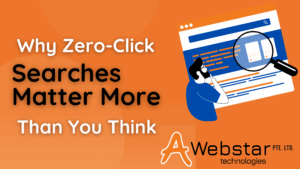
Gone are the days when the one-size-fits-all approach was the standard model in the online business industry. Nowadays, online businesses without AI technology can not stand out in such a fast-paced, technology-driven and highly competitive digital marketplace. Machine Learning (ML) has come out as a game changer in various industries such as Healthcare, Retail, Agriculture, Finance, Education, etc. And of course, web designing is no exception. All in all, artificial Intelligence in web design is playing a vital role in developing & designing websites for businesses in every niche.
Leveraging machine learning applications in web development has revolutionised the way websites are created, optimised, and personalised for their valuable users. That’s why, many businesses delegate their web development & design to professionals that use AI for Mobile App Development, and websites to streamline their business. After all, leveraging Artificial Intelligence in web design will provide them with an enhanced UI & UX. Furthermore, as a business owner, it will help you to get the audience’s attention and achieve a higher response from the target audience.
This write-up aims to explore the exciting revolution that AI brings to web design. Also, we will discuss how AI & ML helps designers to create more dynamic, adaptive, and user-centric websites.
How Artificial Intelligence in Web Design Revolutionises User Experience?
Let’s explore the benefits of leveraging machine learning & artificial intelligence in web designing.
Personalization: Tailoring User Experiences with AI & ML
Personalization is all about tailoring the products, services and websites for users as per their individual needs, choices and preferences. Here, Al uses a machine learning algorithm to analyse the user data and create tailored experiences and provide personalised recommendations for target users.
Customised Recommendations
AI algorithms analyse user data and can offer personalised recommendations based on the user’s browsing history, purchase behaviour, or interest. For example, an e-commerce website might use AI to analyse users’ earlier purchase history and recommend more personalised products & services. Plus, a news app might use AI to analyse users’ specific interests and curate a custom feed of articles based on it.
Adaptive & Responsive Designs
Machine learning algorithms can create adaptive & responsive designs, which can be automatically adjusted according to user preferences, interactions and behaviours. For example, if any user has a specific type of device or screen size, the website layout will automatically adjust to provide an optimal user experience.
By leveraging machine learning in web design, websites will be able to learn about several aspects of user behaviour. Based on these observations they can work on navigation patterns, content placement, optimise the layout, and even colour schemes. Such a human-centric approach provides a more intuitive and user-friendly experience.
Dynamic Content Optimization
AI is used to optimise content in real-time based on past user behaviour patterns and interactions on websites. By analysing user engagement data, AI algorithms can dynamically adjust content placement, layout, and visuals to improve user engagement and increase conversions. This means AI-powered tools help in content optimization which further optimise website performance and improve customer engagement.
Automation: Streamlining Web Design & Development
AI not only improves user experience but also automates various web design processes while saving time and effort for designers.
Automated Design Tools
AI algorithms can be used to generate multiple layout options based on predefined design rules. It reduces the time-consuming process of manually creating website wireframes, mockups, logos, and banners. Designers can then choose the most suitable option while saving significant time and effort in the initial design stages. This not only saves time but also reduces the cost of manual design work.
Chatbots and Virtual Assistants
AI-powered chatbots and virtual assistants provide personalised and instant support to website visitors. These intelligent artificial bots can answer common questions, provide recommendations, and guide users through various processes. When you reduce response times, you will be able to provide improved customer satisfaction, user experience and engagement. Businesses can reduce their customer-support costs when they leverage machine learning algorithms in their web design project. Moreover, automating some mundane tasks allows them to focus on other critical areas of their business.
Natural Language Processing
NLP is a field of artificial intelligence that focuses on the interactions between computers and humans through natural language. Such NLP techniques enable computers to understand and process spoken words or text in the same way a human being can understand. Thus, NLP enables websites to leverage voice-based navigation, search, and provide personalised recommendations.
For example, a voice assistant might use NLP to understand, process and respond to spoken words (voice commands). Plus, a chatbot might use NLP to understand, process and respond to written searches or queries (text).
Intelligent Design Assistance
AI-powered design tools can provide real-time feedback and suggestions to designers. For example, intelligent algorithms can generate design suggestions, and offer guidance on colour palettes, typography, layout options and visual hierarchy, etc. Such a Designer-AI collaborative approach sparks creativity and helps designs adhere to best practices and accessibility standards. Moreover, AI-based design assistance enables designers to create visually appealing and user-friendly interfaces more efficiently.
Image Recognition
Using machine learning and artificial intelligence in web design enables software to analyse digital images and videos. Moreover, software processes the data to understand the context and content of visuals, such as place, people, actions, objects, and text. This opens up opportunities for designers to create intelligent image galleries, automated image tagging, and personalised visual experiences based on user-generated content.
Predictive Analytics
Predictive modelling is a form of data mining technology. It involves using machine learning arthrograms to analyse past and current data and predict future outcomes or behaviours. Predictive modelling can give you an idea about how a user will be more likely to interact with a product or service. Furthermore, you can use a call to action and stimulating content that might be of their interest.
For example, a ride-share app might use predictive modelling to analyse past and current traffic patterns and suggest alternative routes to a user. Plus, a finance management app might use predictive modelling to analyse users’ past & current risk scenarios & financial goals and suggest investments accordingly.
The Final Words: Enhanced UI & UX
AI has revolutionised the web designing processes as it has opened new routes for crafting unique user experiences. Using AI & machine learning algorithms helps designers to analyse user behaviour patterns. Moreover, designers can use this data to tailor websites accordingly. Personalised recommendations, intuitive navigation, and interactive elements like content and call to action boost engagement. Furthermore, it ensures that each user’s journey is seamless, smooth, exciting, engaging and delightful.















































